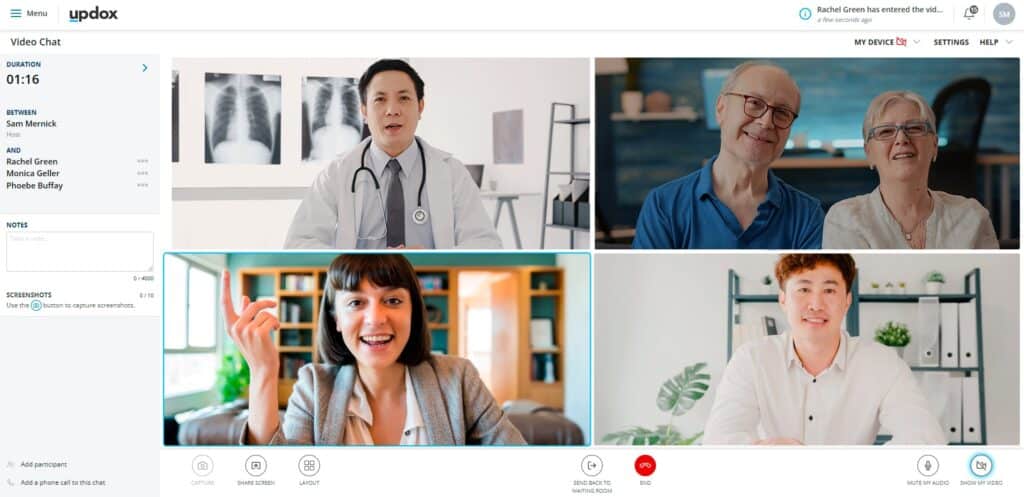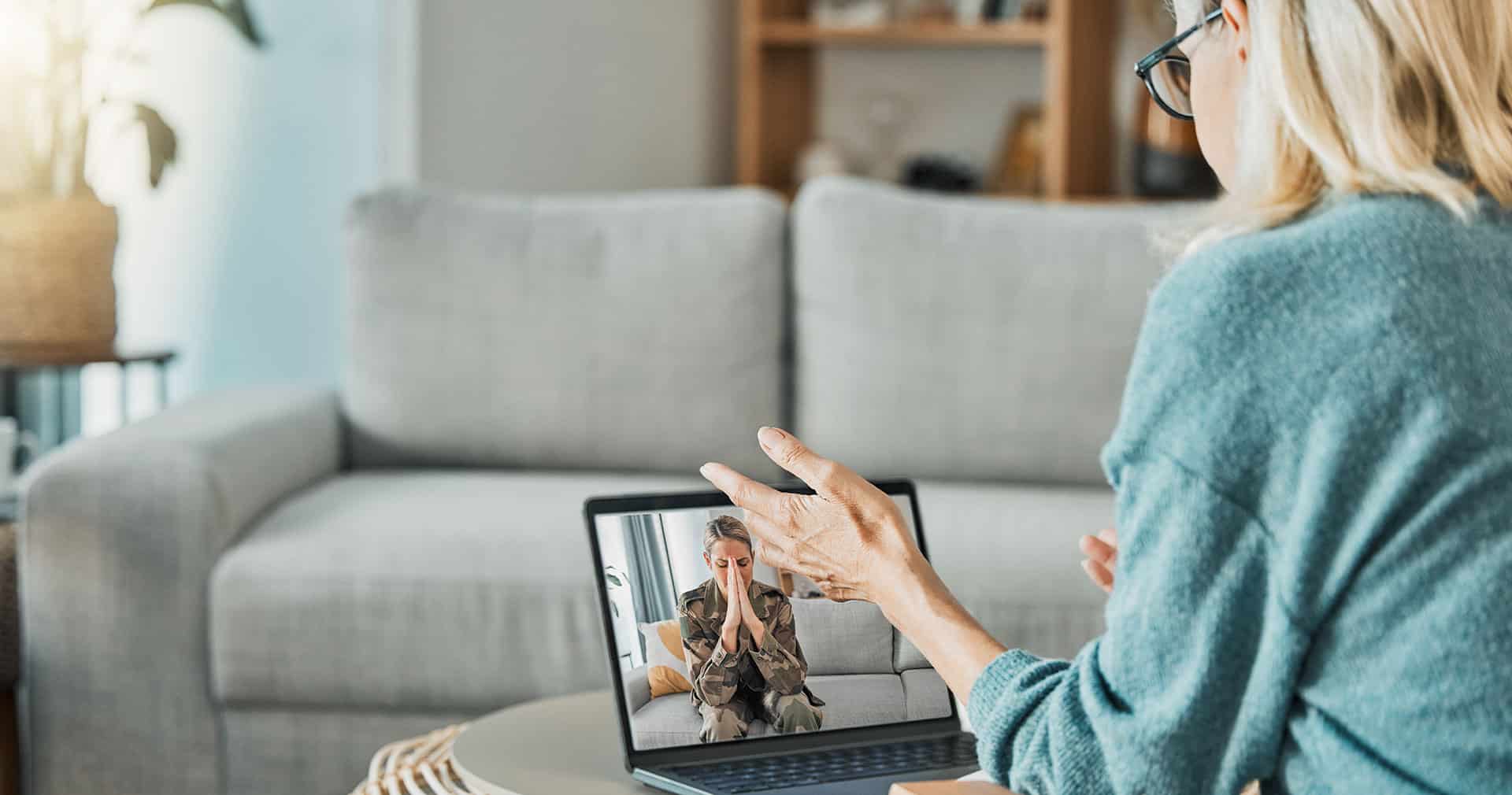Virtual care, telemedicine, and other remote healthcare solutions rose to prominence in response to the pandemic’s social distancing restrictions. But patients and providers soon found virtual care and video chat to be full of convenience, and now these telehealth solutions are poised to become some of the most important services a healthcare provider can offer.
Why Our New Video Chat Solution Is Right for You
Let’s take a look at the new features of Updox Video Chat in action! These short videos will give you a glimpse of what it’s like to work with our new, best-in-class solution.
Improved Waiting Room Experience
The new waiting room experience makes handling your workflow simple and intuitive. Our goal was to replicate the in-person experience in a virtual format. See how it works:
New Participant Workflow
Want to see what it’s like for your patients to take part in a Video Chat session? This video shows how participants access and use Video Chat, from receiving their invitation to joining the call:
Sending Invites
You can invite participants to video chats or audio-only calls and can have a mix of both in any one session. Video chat invites will be sent either by text message or email and are available immediately, while audio-only calls use a participant’s telephone line. Check it out:
Adding Participants on the Fly
Using secure links, you can instantly add participants to a call that’s already in progress. And it’s super easy to do:
Screen Sharing and Gallery Mode
Updox Video Chat makes it easy for you to share your screen with participants. You can choose to share your entire screen, a particular window, or a browser tab. We also offer a Gallery view so you can see all chat participants at once. See it in action:
The Overall Importance of Virtual Care
Virtual visits are in demand right now, and are especially popular with younger patients (although there are proven ways to get your older patients involved with technology as well).
By allowing patients and providers to communicate with each other through live video, practices can improve care while reducing costs and improving convenience on both sides of the patient/provider equation. There’s no sacrifice in quality either according to a recent study by the AMA, 60% of clinicians agree or strongly agree that telehealth enabled them to provide high-quality care.
One of the main benefits of virtual care is that it increases access to care over 80% of physicians surveyed by the AMA indicated that patients have better access to care since they began using telehealth. This is especially beneficial for those who live in rural areas, have limited access to transportation, or have difficulty leaving their home.
Telehealth also helps to reduce costs for providers, according to 44% of respondents in the same AMA survey. Meanwhile, it helps providers see more patients, with 75% of clinicians saying that digital waiting rooms would improve telehealth workflows. See this infographic with five statistics every physician should know about virtual care for even more insight into the huge role virtual care plays in today’s healthcare landscape.
Updox Learned & Listened
We’ve learned from the pandemic and made changes to our Video Chat product to accommodate what patients and providers want out of a top-tier video chat solution. Many providers needed to make quick decisions with their virtual care strategies at the onset of the pandemic, and many platforms just weren’t ready for the new normal of virtual healthcare that still feels personalized. So, we took it upon ourselves to create a best-in-class solution with our new, next-generation Video Chat.
The new Updox Video Chat features a more intuitive and comprehensive waiting room experience for patients, one that mimics the in-person experience and allows care team members to triage patients more effectively. Participants can also come in and out of the chat as needed, just like popping in and out of a physical waiting room.
You can also create public URLs for your virtual waiting room to support urgent care or on-demand telehealth visits. Patients are able to access a virtual waiting room using these public URLs, so no personalized invite is required.
Our calls can now support up to 12 participants simultaneously, which is something requested by many behavioral health and group therapy providers, and is excellent for calls that require parent attendance, translators, and other additional members.
To manage all this, Updox Video Chat features improved granular host controls, including the ability to add participants into ongoing video chat sessions. You can set designated speakers for a call, automatically muting the rest of the participants, and can add or remove time remaining in existing calls to proactively stay ahead of your schedule.
During calls, patient connectivity status is displayed so providers can actively troubleshoot a bad connection, or know to stop talking when a call freezes up. Now you won’t have to worry about giving a patient detailed healthcare instructions only to realize their connection died halfway into your first point!
And, of course, Updox Video Chat uses a HIPAA-compliant environment for your video calls in order to keep your patients’ PHI private and protected.
Have Questions About Optimizing Your Virtual Care Strategy?
Telehealth should be an important part of your strategy for connecting with patients. If you’re ready to take your practice to the next level but just need a little guidance on how to get there, get in touch with one of our Updox experts today to see how we can help!
Talk With an Updox Expert





